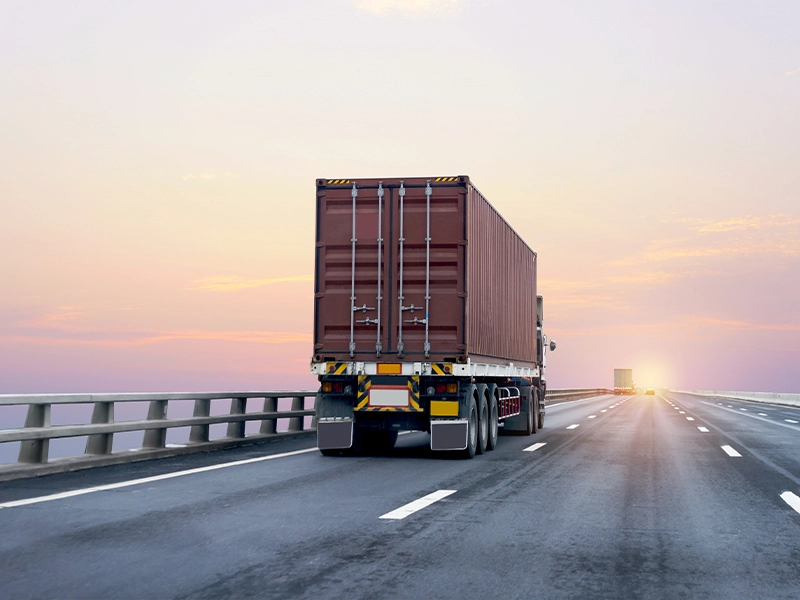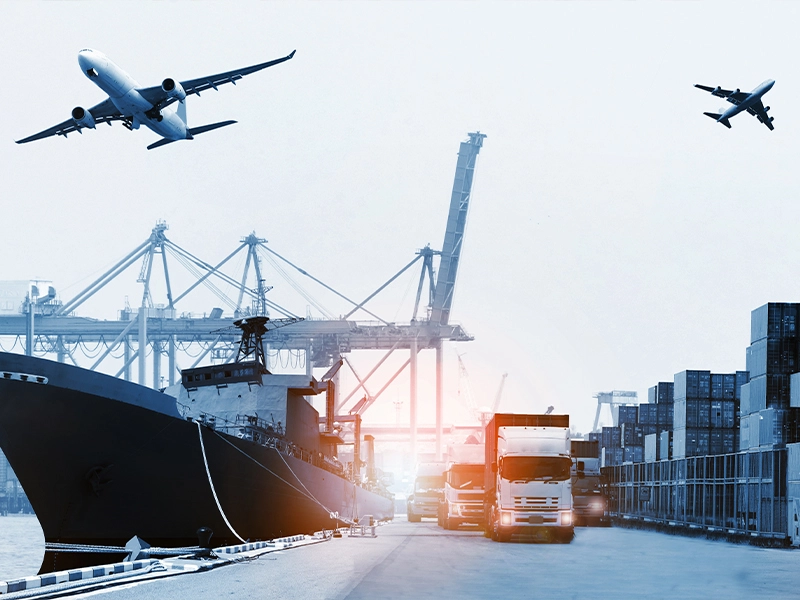On the global stage, shipping and logistics companies are leaders of global trade and climate leadership. At EMA Shipping, we believe that cutting emissions is not just about compliance—it’s about leadership, accountability, and operations excellence.
This guidebook explores global freight and logistics solutions for Pakistan and other logistics professionals to significantly reduce supply chain carbon trails, boosting efficiency, reputation, and long-term resilience.
Map & Measure Emissions First
Start with what you can’t see. Use carbon-footprint audits to discover where your emissions are most significant—transportation, warehouses, packaging, or service-level deficiencies. It’s UNIDO-certified best practice and creates a baseline for quantifiable improvements.
Optimize Transportation: Route, Load & Mode
- Route Optimization: Use AI-powered route planners to cut mileage, idling, and fuel use, especially in Pakistan’s congested city lattices.
- Load Consolidation and Backhaul: Get maximum use from truck capacity and avoid unnecessary backhaul trips—saving journeys and emissions by up to 50% per ton-mile.
- Modal Shift: For long-distance hauls, turn to rail or sea, saving 75% of emissions compared to road.
- Collaboration: Share freight with competitors or customers where paths overlap—making the journey more efficient and sustainable.
Greener Fleet & Eco-Driving
- Vehicle Refit: Refit to cleaner, newer engines; hybrid, CNG, or electric, where viable, close to city centers.
- Fleet Maintenance Programs: Keep your fleet in top shape; good tire pressure, timely servicing, and aerodynamic equipment (e.g., trailer skirts) can make a big difference in fuel savings.
- Driver Training: Promote eco-driving; smooth braking, constant speed, and idling minimization, drivers notice savings, not merely direction.
Go Green in the Warehouse & Office
- Energy Efficiency: Substitute lighting with LEDs, automate on/off controls, and optimize HVAC in warehouses.
- Renewable Power: Install solar panels or other renewable energy sources to minimize grid dependency and emissions in the long run.
- Packaging Upgrades: Move to recyclable, lightweight, or reusable packaging—minimizing material waste and transport emissions.
Digital & Paperless Processes
- Paperless Documentation: Implement digital proof-of-delivery (POD) to minimize emissions from paperwork, following Pakistan’s trade digitization program, lowering more than 32 kg CO₂ per transaction.
- Smart Inventory: Use IoT sensors and analytics to level inventory levels across warehouses to avoid overstock and redundant shipments.
Circular & Reverse Logistics
- Return-Logistics: Create return systems for reusable crates, pallets, or containers for closing the materials loop and reducing waste.
- Recycling Programs: With eco-packaging, get your materials recycled or composted wherever possible.
Collaboration, Certification & Offsetting
- Supplier Engagement: Welcome carriers and suppliers to partner in your sustainability initiatives.
- Certifications: Opt for universally recognized programs like ISO 14001 or SmartWay to certify your green achievements.
- Offset Schemes: When emissions can’t be reduced short term, look at verified carbon-offset programs—reforestation, renewable energy, to offset your footprint.
Why is Sustainability Important for EMA Shipping?
- Efficiency = Profit: Cleaner carbon footprints translate to fewer miles, less fuel, and lower expenses.
- Reputation Growth: Customers and regulators increasingly demand green logistics solutions.
- Regulatory Forethought: Be ahead of environmental regulations in Pakistan and worldwide.
- Future-Proofed Operations: Make EMA Shipping a resilient, forward-thinking logistics market leader.
Your Next Step: Create a Roadmap for Sustainability
- Inventory your supply chain energy consumption and emissions.
- Set targets: short-term achievements such as a 10% reduction in emissions within 12 months.
- Pilot projects—test mini-green initiatives: one electric delivery route, solar panels on a warehouse, and digital documentation implementation.
- Track & report: apply tools to track progress and establish openness.
- Scale: roll out successful pilots throughout your network with ongoing improvement.
Final Word
For the logistics sector, it is not necessary that a conflict between business prosperity and sustainability exists to address carbon emissions. The two are interchangeable with one another. With global freight and logistics solutions, combining route and package optimization, green fleets, warehouse technology, digitalization, and collaborative practice, EMA Shipping and its stakeholders can deliver a cleaner, smarter, and more resilient supply chain.
Let’s start the green logistics revolution in Pakistan—ship by ship.


